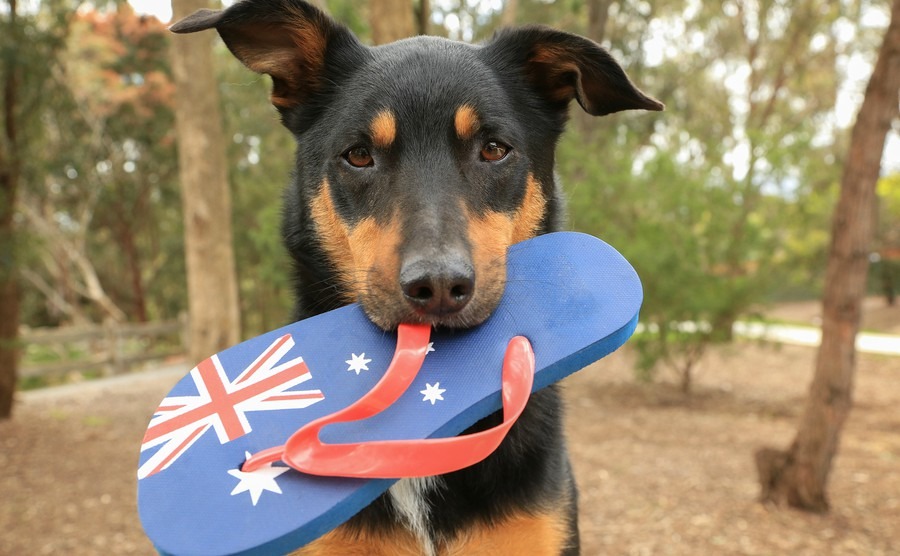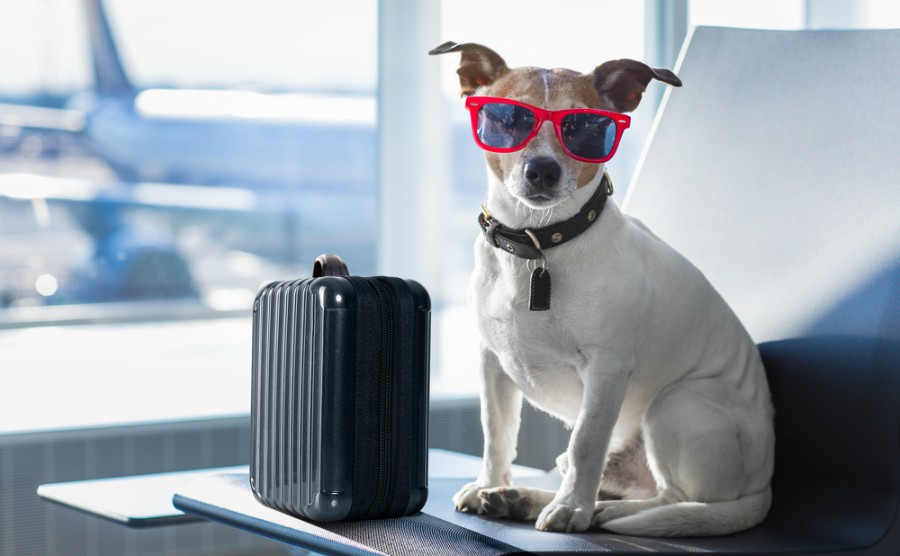You don’t want to leave any of your family behind when you go to Australia, and that includes your four-legged family. Fortunately, moving with pets to Australia is simple, if not cheap. It just requires a bit of planning.
When you have a pet, there is an additional, more complicated layer to moving your life overseas – not least with the question as to whether you should take it with you or leave it with a family friend.
An Australian vet began a campaign last year behind the hashtag #keepauspetfriendly
Australia is a generally regarded as exceptionally pet friendly, especially compared to other countries in the Asia-Pacific region. Dogs are welcome in most parks and are a common sight out for walks in residential areas. You won’t see many stray dogs, and in some public places dogs must be kept on a lead, and this is definitely a country where you clean up after your dog. Australians are keen to keep it pet-friendly too, despite falling numbers of pets. An Australian vet began a campaign last year behind the hashtag #keepauspetfriendly claiming that “Most of our cities and towns have now become so non-inclusive of pets that a simple walk is more akin to a stroll through a minefield of potential fines, infringements and criticism. Or they’re simply not welcome at all — there are entire suburbs that ban cat ownership.”
We have put together the ten steps to being on Bondi Beach with Blondie, Barney or Buddy.

Do your research before putting your pet on the plane to Aus
1. Can you afford it?
It costs around £1,500 to take your cat to Australia, £2,000 for a small dog and up to £4,000 for a large dog. Of course those are ruff figures (sorry). It’s nice that the dog will be enjoying first class with drinks on tap and a bed seat while you’re slumming it in economy, isn’t it?
2. The cost of treatments
As well as the cost of transport, you need to add the cost of veterinary treatment, microchipping and pet passport. This will cost roughly £350, but you would have to pay that simply to take the dog to France.
3. Get a vet.
Your vet needs to be a “Government Approved Veterinarian”. Don’t panic about this phrase; virtually all British vets are government approved, but do ask. If possible, speak to a vet experienced in preparing animals for overseas – as well as gaining a thorough knowledge of the procedures, you will be able to discuss your pet’s overall health and age and how well they will be able to cope with the process.
Download your free guide on planning a viewing trip in Australia.
4. Get microchipped
Dogs can go to Australia but they must be microchipped before the Rabies Titer test as the vet scan the microchip before to the blood test. You need to be at this stage a good six months before you leave because there has to be a 190-day gap between the blood test and the move. If you can’t do that your pet will need to be in quarantine in Australia.
5. Assess the environment
Speak to local experts and find out about the area – is there a local vet? Is animal care affordable? What risks are there for your pet? Your cat won’t be used to dingos, snakes, big spiders… If your cat has had a tendency to be standoffish in the past, you might forge a new relationship in adversity. In all seriousness, however, do ensure that you know the risks. Just last week there calls for protection for dogs against crocodiles near Cairns. Risks include the extreme weather in Australia.

Contact the airline before you travel.
6. Contact your airline
Every airline will have different regulations for transporting animals overseas, so make sure you speak directly to a representative about any issues. It is usual to employ a specialist agency to organise the transport, and this can save a lot of money (and heartbreak). For example, you will need the right size and specification of cage – an expensive one-off purchase if you buy your own!
7. Final checks
In the last few days you will need to ask your vet for a Health Certificate that proves it is healthy and fit to fly. Treatments may be required to cover dogs for bordetella, distemper, hepatitis (Adenovirus type II acceptable) and parvovirus, and to cover cats for feline viral rhinotracheitis, feline caliccivirus and feline panleukopenia.
8. On arrival
Cats and dogs must spend at least 10 nights in quarantine. Melbourne has the only quarantine facility in Australia, but if you’re staying nearby, sadly visits are not allowed. You will also need to budget for this cost, of around $150 (£85) per day.
So that’s the dog and cat looked after, now it’s time to organise your own emigration. Don’t suffer another British winter, download our Emigration Guide today!
9. Pet insurance in Australia
The cost of living is a little higher in Australia than the UK (although so are salaries, meaning your purchasing power in Oz should be a little higher) and that extends to veterinary treatment. Given your pet will not be used to the environment it will often pay to insure it even if you didn’t in the UK. The price of insuring your pet is around $200 (£115) for accident cover for a cat and over $400 for accident and illness. For dogs you’ll pay around $400 for accident and over $550 (£310) for accident and illness.
10. Enjoy life!
We’ve talked a lot about costs and risks, but pets are all about joy, aren’t they? Here is what the leader of the Keep Australia Pet Friendly campaign Dr Chris Brown says: “Quite simply, pets make us happy. They wash away our worries while showing us how life should be lived. And pets are proven to also make us healthier. Research shows that having a pet in your home means children are less likely to catch colds, need antibiotics or develop asthma. And throughout life having a furry family member leads to more exercise, lower blood pressure, fewer visits to the doctor, ¬better cardiovascular health and an easing of loneliness.”
Australia’s outdoor lifestyle is ideal for cats and dogs who can be snoozing out on the veranda rather than sitting on the sofa. Australian homes are big enough to accommodate a pet too. The average new build Australian home is just under 250 square metres, compared to around 76 square metres in the UK!
So, no excuses – you’re taking the dog with you!







